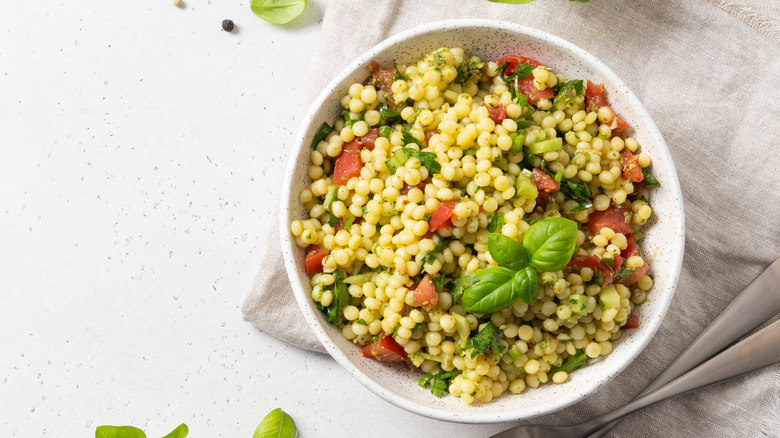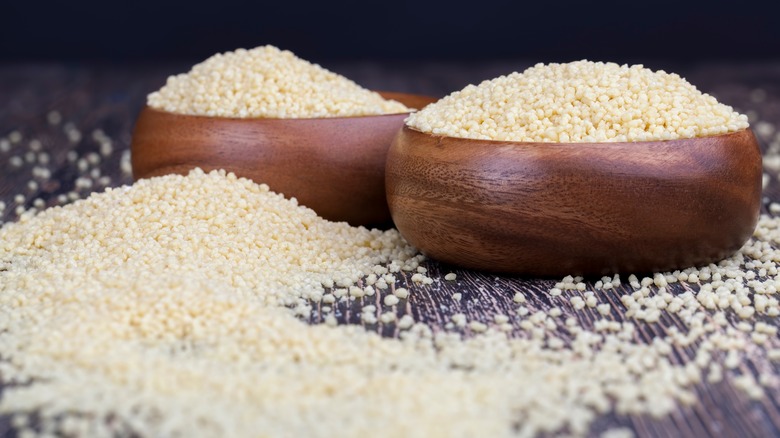How Much Water You Should Really Be Using For Couscous
Measuring ingredients is important for a lot of dishes, but when it comes to boiling pasta, it's not always necessary. If you cook pasta often enough, you probably don't measure out the water or weigh the noodles before you add them in the pot. But couscous, despite the fact that it's technically considered a pasta, doesn't work quite as well with the eyeballing method.
According to Eating Well, couscous should be treated more like a grain when you cook it. That means instead of adding it to a pot of water and draining it, you'll have to cook it like rice or quinoa with the appropriate amount of water. A ratio of one cup of water to two thirds cup of couscous works best. Depending on the texture you're going for, this can be slightly modified, The Kitchn points out. Less water yields a drier couscous that works well if you're adding it to a salad or topping it with sauce, and more water results in couscous that's softer and stickier.
Not all couscous cooks the same
All couscous is spherically shaped, but there are actually three different types of it: Moroccan couscous, Israeli couscous, which is often advertised as pearl couscous, and Lebanese or Moghrabieh couscous. As Cooking Light explains, Moroccan couscous is the smallest and cooks the fastest, Israeli couscous is slightly larger and requires about 10 minutes, and Lebanese couscous is the biggest and takes the longest.
No matter what type you cook with, the ratio of water to couscous will be the same. The cooking time is the main difference, and you'll know the couscous is done when the water is fully absorbed, The Kitchn shares. Until then, just let it sit. If there's no liquid left and your couscous seems crunchy, it's still undercooked. If that's the case, cover the pot and let it steam for a bit longer. Afterwards, fluff the couscous with a fork and it should be good to go.

